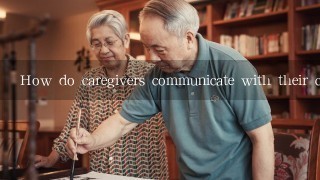How do caregivers communicate with their clients and their families?

Answer:
Effective communication between caregivers and their clients and families is crucial for ensuring the well-being and safety of everyone involved.
Here are some strategies for effective communication:
1. Establish Clear Communication Channels:
- Define preferred communication methods (e.g., phone, email, text, video calls).
- Ensure that all caregivers and family members have access to these channels.
2. Use Simple and Clear Language:
- Avoid using medical jargon or technical terms that may be confusing.
- Use clear and concise language that is easy for everyone to understand.
3. Be Transparent and Honest:
- Provide regular updates on the client's health, progress, and any changes in the care plan.
- Be open to feedback and questions from the client and family.
4. Use Active Listening Skills:
- Pay attention to both verbal and nonverbal cues.
- Ask clarifying questions to ensure understanding.
- Validate the client's feelings and concerns.
5. Provide Regular Feedback:
- Share progress reports, photos, or videos to keep the client and family informed.
- Encourage regular communication between visits.
6. Use Technology Wisely:
- Utilize telehealth platforms for virtual check-ins and consultations.
- Share health data and progress updates through secure online portals.
7. Foster a Positive and Respectful Environment:
- Treat the client and family with respect and dignity.
- Listen to their concerns and validate their feelings.
8. Be Patient and Understanding:
- Communication may not always be easy, especially during challenging times.
- Be patient and understanding with the client and family.
9. Seek Professional Help When Needed:
- If communication challenges persist or escalate, consider seeking support from a therapist or counselor.
10. Encourage Self-Care for Caregivers:
- Provide resources and support to caregivers to cope with the emotional and physical demands of caregiving.
Remember, open and effective communication is a two-way street. By actively listening, providing clear and concise information, and being transparent, caregivers can build strong and trusting relationships with their clients and families.




















































































